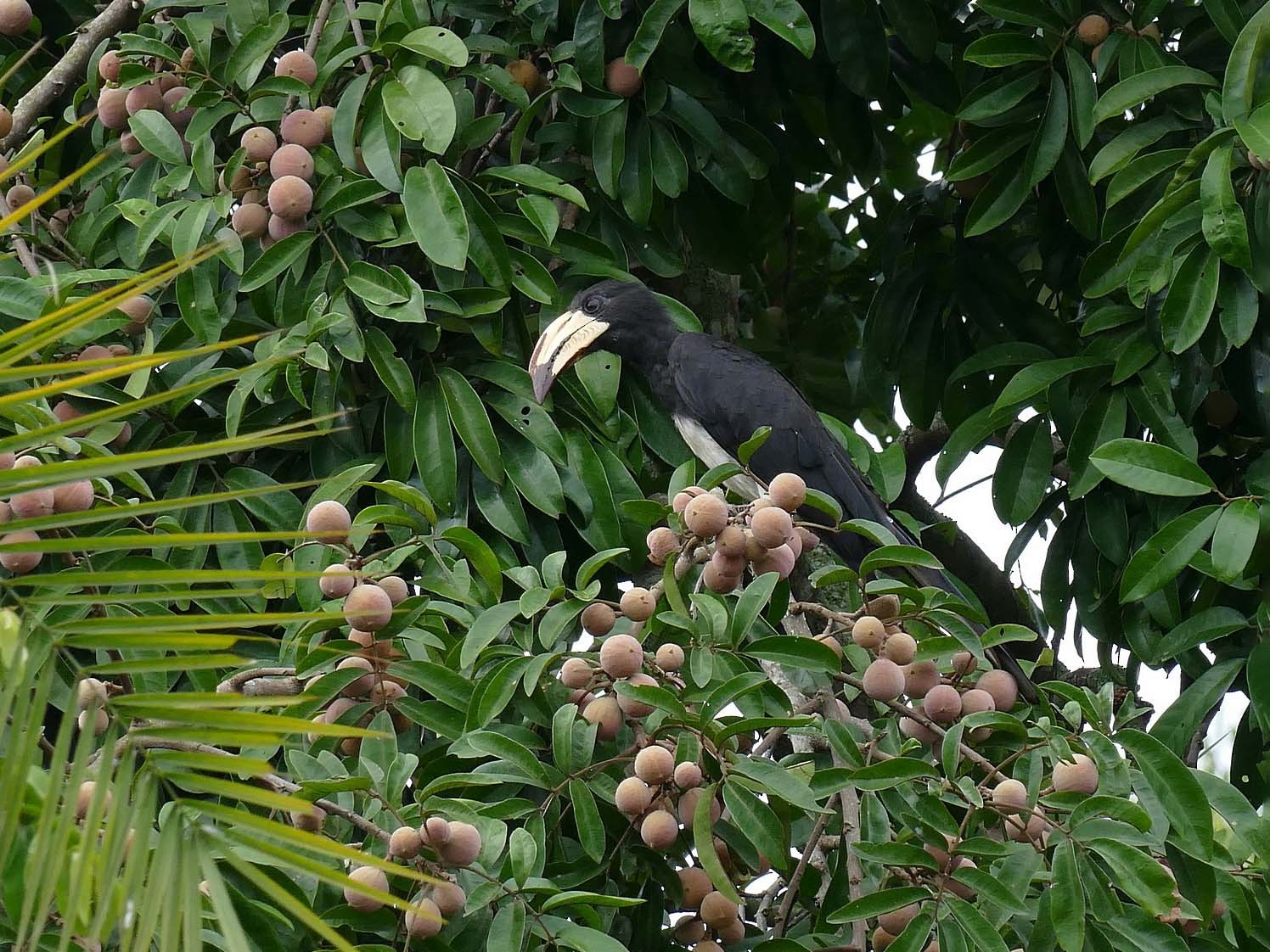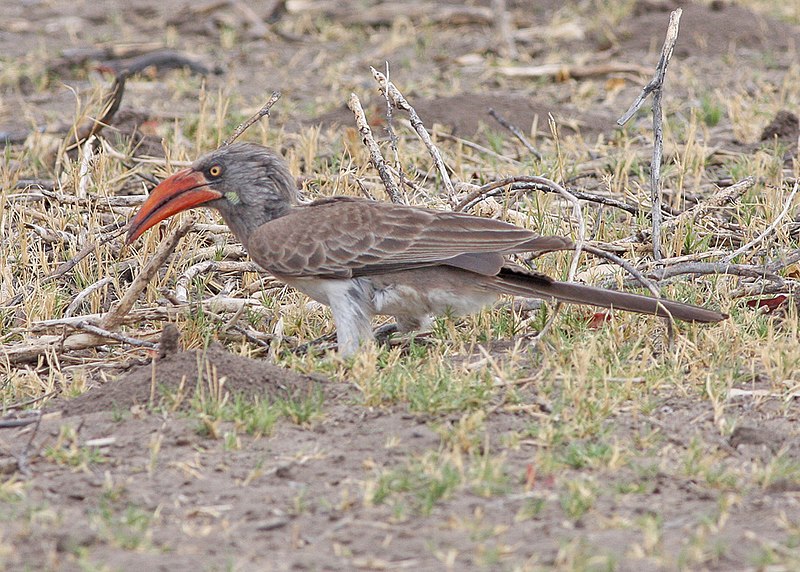Congo or West African Pied Hornbill Bird Details
Lophoceros fasciatus
Congo or West African Pied Hornbill
NA
George Kearsley Shaw, 1812
Bucerotiformes (HOOPOES and HORNBILLS)
Bucerotidae
Lophoceros
Central and West Africa: Democratic Republic of Congo, Cameroon, Gabon, Equatorial Guinea, Central African Republic, Republic of Congo, Nigeria
Appearance :
The Congo Pied Hornbill is a medium-sized hornbill species with a distinctive black and white plumage. It has a black head, neck, and wings with white markings on the belly and tail. The bill is yellow with a casque (horn-like structure) on top, typical of hornbills.
Behaviour :
These hornbills are typically found in pairs or small groups. They are known for their strong, undulating flight patterns and are often seen perched in treetops or flying between trees in dense forests.
Habitat :
They inhabit lowland and montane tropical forests, preferring areas with dense vegetation where they can find fruiting trees and suitable nesting sites in tree cavities.
Diet :
Their diet consists primarily of fruits, supplemented with insects, small vertebrates, and occasionally eggs.
Conservation Status :
Least Concern
Distribution :
They are native to the tropical forests of Central and West Africa, including countries like Democratic Republic of Congo, Cameroon, Gabon, Equatorial Guinea, and others in the region.
Population Size :
They are generally considered to be locally common within their range.
Life Span :
Live for several decades.
Body And Tarsus:
Medium-sized hornbill with a distinctive black and white plumage pattern.
Head And Bill :
The head is black with a large, pale-yellow bill that has a casque (a structure on the upper bill). The bill is relatively large and sturdy, adapted for catching prey and breaking into fruits.
Length :
Approximately 50-55 cm (20-22 inches).
Neck :
Short and thick, typical of hornbills.
Size :
Medium-sized among hornbills.
Tail Details :
Short, with a white tip.
Weight :
Typically around 200-300 grams.
Wing :
Broad wings suited for short flights.
Wing Span :
Wingspan ranges around 70-80 cm.
Facial Feature :
Prominent casque on the bill, which is more developed in males.
Nest Details :
- Nest: The nest is located in natural tree hollows or sometimes abandoned woodpecker nests.
- Nest Made Up Of: The inside of the nest is lined with leaves and other plant materials.
Breeding Season :
Generally breeds during the wet season.
Nesting Season :
Usually nests in tree cavities.
Egg Color :
White.
Egg Length :
Approximately 35-40 mm.
Egg Width and Weight :
Approximately 25-30 mm. Each egg weighs approximately 40-50 grams.
Clutch Size :
Typically 2-4 eggs per clutch.
No. of Broods :
Usually raises one brood per breeding season.
Incubation Period :
Around 25-35 days, typically done by the female.
Nestling Period :
About 4-5 weeks.
Vocalization :
Their calls are loud, with a variety of squawks and cackles.
Sex Demorphism :
Males may have slightly larger casques.
Migration Details :
Generally non-migratory.







